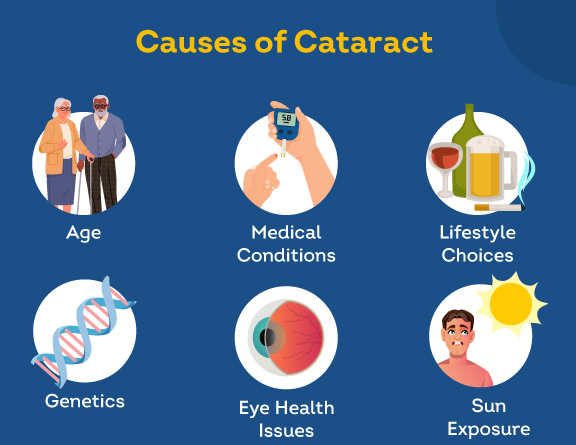
Select City
Intumescent cataract surgery addresses an advanced stage of cataracts characterised by a swollen, fluid-filled lens, significantly impairing vision and potentially leading to acute complications if untreated. If you're noticing marked vision cloudiness or impairment, contact Pristyn Care to consult with top ophthalmologists specialising in modern cataract treatments. Book your appointment today for expert care and a personalised treatment plan designed to restore your vision and improve your quality of life.
Intumescent cataract surgery addresses an advanced stage of cataracts characterised by a swollen, ... Read More




Free Consultation

Free Cab Facility

No-Cost EMI

Support in Insurance Claim

1-day Hospitalization

USFDA-Approved Procedure
Intumescent cataract surgery targets advanced cataracts characterised by a swollen, fluid-filled lens, which can lead to increased intraocular pressure and potential complications. This condition primarily affects individuals experiencing significant vision clouding, impacting daily activities and quality of life. Performed by an ophthalmologist, the procedure involves carefully removing the swollen lens and replacing it with a synthetic one to restore clarity and prevent further vision deterioration.
The surgery is crucial for preventing complications such as acute glaucoma. Patients typically experience significant improvement in visual acuity, contributing to better overall life quality. This treatment is a focused intervention, ensuring safety and effectiveness in vision restoration.

Fill details to get actual cost
Intumescent cataract surgery addresses the specific challenge posed by swollen, fluid-filled lenses. Here are the primary types of surgical procedures used:
Diagnosing intumescent cataract begins with a comprehensive ocular examination. The methods include:


Intumescent cataract surgery involves several steps aimed at safely removing a swollen lens:
This procedure is meticulously planned to manage the challenges in intumescent cataract surgery effectively, ensuring a clear postoperative vision.
Diet & Lifestyle Consultation
Post-Surgery Follow-Up
Free Cab Facility

24*7 Patient Support
Intumescent cataract surgery is tailored for patients experiencing specific lens conditions. Here, we outline who might be suitable for this procedure. Ideal candidates typically include:
Previous Eye Treatments: Patients who have had previous eye surgeries and require specialised surgical approaches due to altered anatomical conditions.
Intumescent cataract surgery offers several significant benefits to patients suffering from advanced cataracts. These include:
Minimal Invasion: Modern techniques such as phacoemulsification allow for minimal incision sizes, reducing recovery time and discomfort.
Preparing for intumescent cataract surgery involves several important steps to ensure a safe and effective procedure:
Recovering from intumescent cataract surgery is critical for achieving the best outcome. Here are some tips and precautions:
Each of these steps is designed to address the specific challenges in intumescent cataract surgery and promote a smooth and successful recovery.
Intumescent cataract surgery, while highly effective, carries potential risks and complications, similar to any surgical procedure. Here are some of the potential risks associated with this surgery:
Retinal Detachment: Although rare, the manipulation of the eye during surgery can lead to retinal detachment, a serious condition that requires immediate attention.
The cost of intumescent cataract surgery in India typically ranges between Rs. 25,000 and Rs. 1,00,000. Several factors influence the cost:
Location: Costs can vary significantly between cities and regions within India.
In India, intumescent cataract surgery is generally covered under health insurance policies, as it is considered a medically necessary procedure. Coverage typically includes the cost of the surgery itself, pre-operative and post-operative care, and standard intraocular lenses. However, insurance may not cover premium intraocular lenses or certain advanced surgical techniques that are considered beyond standard treatment.
Patients are advised to consult with their insurance providers for detailed information on what is and isn’t covered under their specific policy, including any deductibles or copayments required.
Intumescent cataract surgery typically lasts between 30 to 45 minutes per eye, depending on the complexity of the case and the technique used.
It is generally recommended to operate on one eye at a time to minimise risk and allow for healing. The second eye may be scheduled a few weeks later.
Most patients can resume everyday activities within a few days, though complete healing can take several weeks. It is crucial to follow the surgeon’s specific post-operative instructions.
Intumescent cataract surgery is highly effective, with most patients experiencing significant improvement in vision clarity, often noticing improvements within a few days after surgery.
Some patients might need glasses for certain activities, like reading or driving, even after surgery, depending on the type of intraocular lens used and personal vision goals.
While the surgery primarily addresses cataracts, it does not cure other eye conditions such as glaucoma or macular degeneration, which might require separate treatment.
Blurry vision can occasionally occur as part of the healing process, but it’s important to consult your surgeon to rule out any complications.
Once performed, intumescent cataract surgery is not reversible. The natural lens, once removed and replaced with an artificial lens, cannot be restored.
Yes, patients with diabetes can undergo intumescent cataract surgery, but it requires careful management of blood sugar levels before and after the procedure to minimise risks and promote healing.
Currently, surgery is the only effective treatment for intumescent cataracts. Alternative methods like medications or vision aids do not halt the progression of cataracts nor restore vision once it has been significantly impaired.